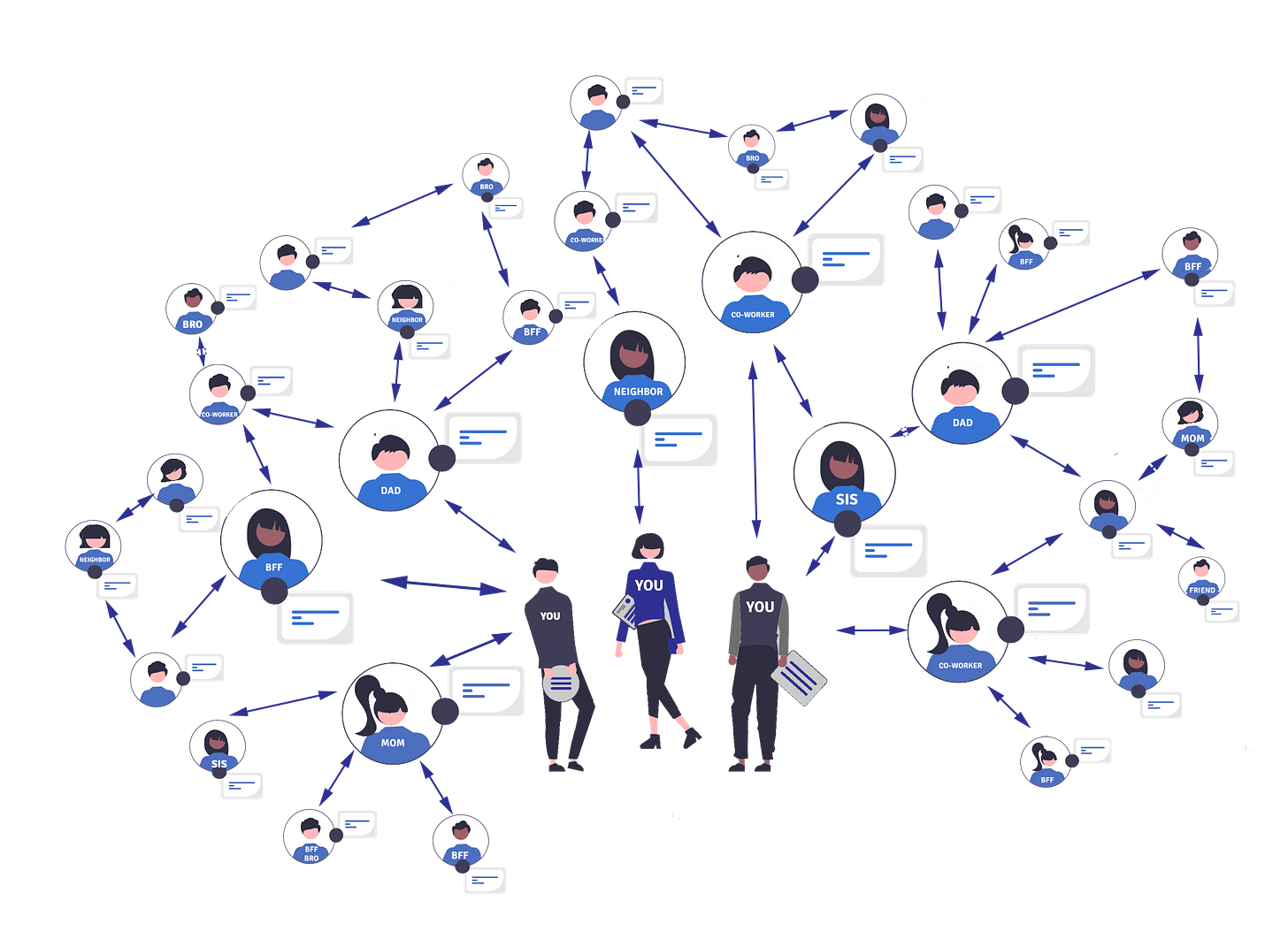From Quick Texts to Deep Trust: Relational Organizing
Does building relationships beats transactional outreach? It depends!
Many people think of relational organizing as nothing more than texting people they know—and while there’s a time and place for these quick, transactional activities, true relational organizing goes much deeper. To create a lasting impact in a district, cause, or campaign, we must treat relational organizing as the art of building communities—fostering trust, relationships, and networks that endure well beyond a single election cycle. This allows for the organization to snap into action when needed, like a ballot measure, a specific election, or a highly competitive race.
There is a difference between true relational organizing and simply having people send texts to people they know. Here's a breakdown:
True Relational Organizing
Core Principle: Focuses on leveraging genuine, personal relationships and trust to drive engagement and action.
Relationship-Based: Involves advocates reaching out to people they already have authentic relationships with (friends, family, coworkers) to engage them on a deeper level.
Ongoing Engagement: This goes beyond a single contact. Advocates are encouraged to maintain conversations and relationships over time to build trust and influence behavior.
Tailored Messaging: Advocates use knowledge of their personal connections to tailor messages, making them more meaningful and persuasive.
Two-Way Interaction: Relational organizing often includes back-and-forth communication, encouraging dialogue, questions, and relationship-building.
Broader Goals: While mobilizing for immediate actions (e.g., voting, attending events) is important, relational organizing also focuses on building long-term networks of trust that can be activated in the future.
Texting People You Know
Core Principle: Simply contact people in your network, often with a pre-scripted message, to achieve a short-term goal (e.g., reminding them to vote).
Limited Depth: Often involves a one-time interaction, like sending a pre-written text to a contact list.
Transactional: Focuses on immediate actions rather than building ongoing relationships.
Less Personalization: While there may be a personal touch (e.g., "Hi [Name]"), the message is often uniform and doesn't leverage personal knowledge of the recipient.
Minimal Engagement: Responses are usually optional or even ignored, and follow-up is rare.
Key Differences
There is a time and place for both true relational organizing and transactional outreach (like texting people you know) in politics. The key is to use each approach strategically, depending on the campaign’s goals, timeline, and resources.
Here's how both can coexist and complement each other:
When to Use True Relational Organizing
Early in the Campaign: Building long-term relationships and trust is vital during the early stages of a campaign to lay the groundwork for voter education and engagement.
For Persuasion: True relational organizing works well when the goal is to persuade undecided voters or engage fewer active audiences. Personal connections can break through skepticism and build trust over time.
Community Mobilization: When mobilizing communities or affinity groups, relational organizing taps into trusted networks and deep social ties.
Volunteer Recruitment: Advocates are often more effective at bringing in others when they engage with their networks authentically.
Building a Movement: For campaigns focused on long-term political change or recurring elections, relational organizing builds networks that last beyond a single cycle.
When to Use Transactional Outreach (Texting People You Know)
Close to Election Day: As the election nears, the focus shifts to immediate voter mobilization. Texting people you know is fast, efficient, and scalable for Get Out The Vote (GOTV) efforts.
Quick Turnaround Needs: If a campaign needs rapid action—like promoting an event, responding to breaking news, or pushing voter registration before a deadline—simple texting is a great tool.
Engaging Passive Supporters: Not everyone is ready or willing to engage in deep organizing. For these supporters, sending a few quick texts to their network might be a comfortable entry point.
Low-Stakes Engagement: When the goal is a single task (e.g., reminding friends to vote), transactional outreach works without the need for ongoing interaction.
Massive Scale Needs: If the campaign needs to reach a large audience quickly, texting can be part of a high-volume strategy.
How Both Approaches Work Together
Relational Organizing Builds the Base: Early in the campaign, advocates develop relationships, identify supporters, and build trust within their networks.
Transactional Outreach Activates the Base: As deadlines approach, those same advocates can leverage their established relationships to send out texts, make calls, or knock on neighbors doors to drive turnout.
Blending Depth with Speed: While some advocates engage deeply with certain people, others might simply text a broader group to maximize impact. Campaigns can segment tasks based on advocate willingness and availability.
Data-Driven Insights Enhance Both: Tools like SwipeRed can identify where true relational organizing is most impactful (e.g., persuading undecided voters) and where transactional efforts can scale effectively (e.g., texting low-propensity voters).
Conclusion
Yes, there’s a time for both. A successful campaign doesn’t treat them as competing strategies but as complementary tools. Relational organizing creates the heart of a campaign, while transactional outreach provides the muscle to win elections. The best campaigns masterfully weave these approaches together for maximum impact.



